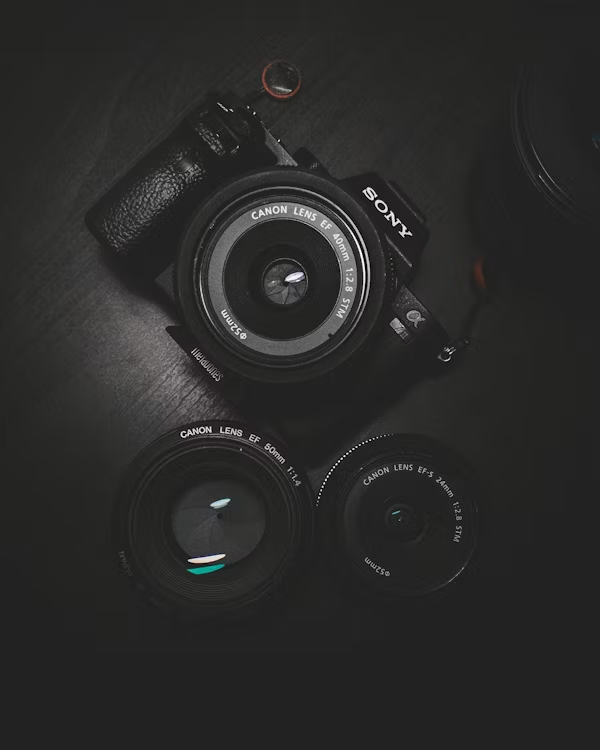Whichever your price range, the best camera for photography
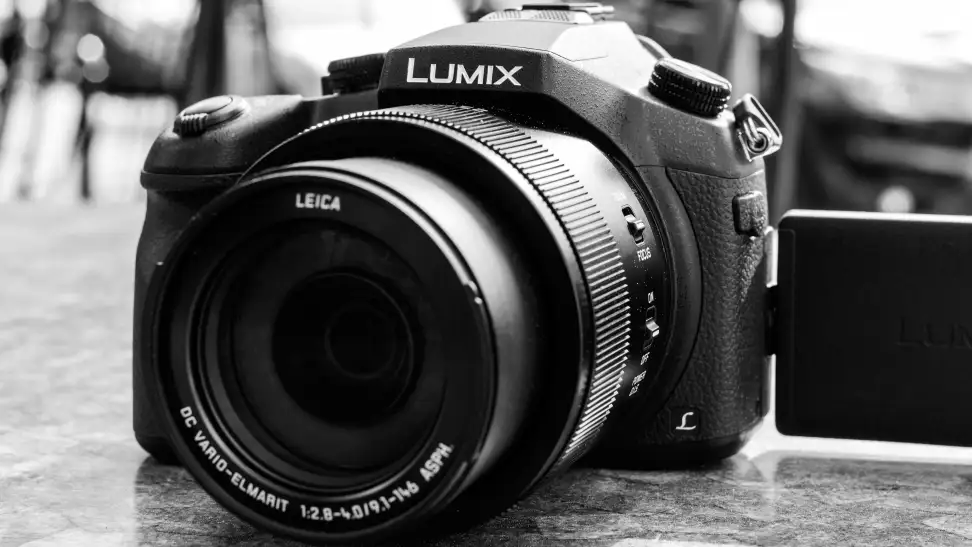
Hundreds of camera evaluations have taught us one thing: there is no one-size-fits-all solution when it comes to selecting the best camera for photography. Yes, we are happy to suggest our preferred stills camera. However, what and how you like to shoot will determine which option is ideal for you. For this reason, our selection of the greatest travel cameras and the best choices for sports photography is included below.
The Sony A7 IV is our choice for the camera that will most likely suit everyone, if we had to choose just one. We’ve spent several hours thoroughly testing it and discovered that it’s a well-rounded full-frame camera with superb image quality and impressive autofocus performance. We are aware, nevertheless, that not everyone will find it ideal. For instance, we believe the Canon EOS R10, our top choice for novice photographers, would be a far better fit for you if you’re new to the hobby.
To gain a complete view of the cameras that will be available in 2024, we recommend reading our expert guide from cover to cover. Based on in-depth reviews from real-world users, each entry below provides an overview of our testing comments. To create an understanding of what and who each camera model is suitable for, our skilled staff examines everything from handling and build quality to autofocus and image quality. To aid in your decision-making, we are upfront about the advantages and disadvantages.
Top 5 Best Camera In 2024:
1.Sony A7 IV
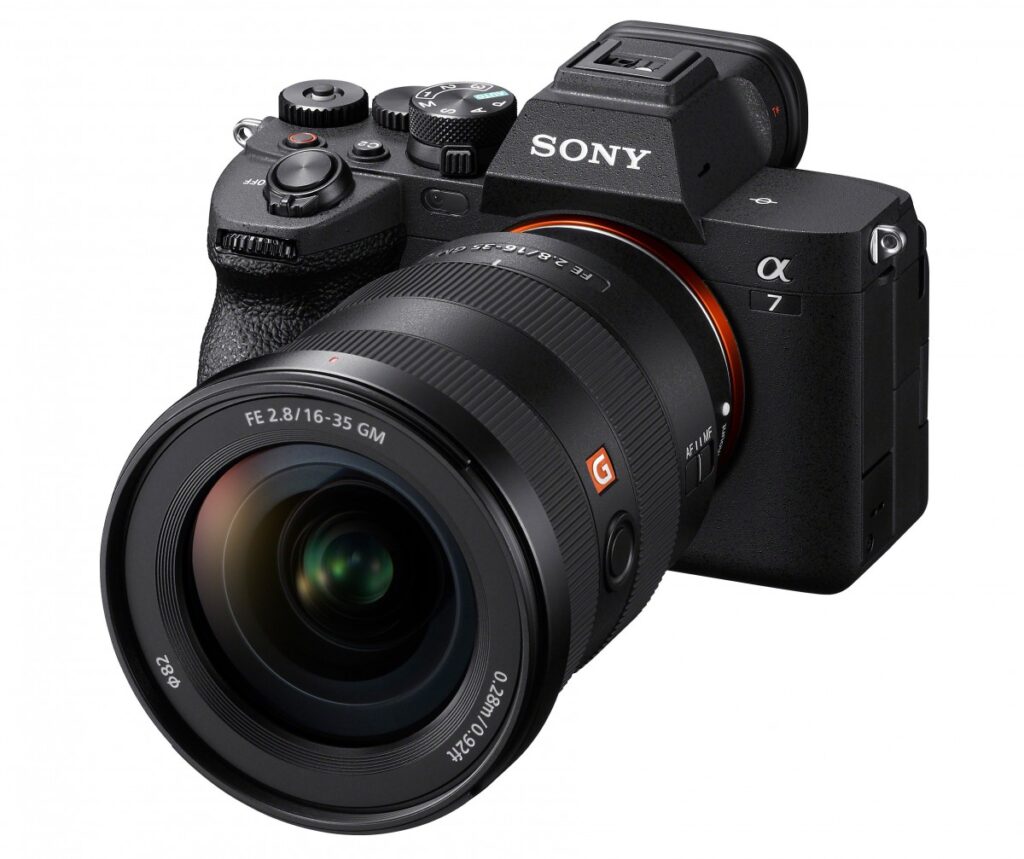
Pros
- Impressive 33MP sensor
- Class-leading autofocus
- Vari-angle screen
Cons
- Heavily cropped 4K footage
- Complex for beginners
It was never going to be easy to follow the incredible A7 III, but the A7 IV is a solid replacement. It’s an attractive mirrorless choice for hybrid shooters with a new 33MP sensor that performs well in both still and video images. We described it as a “brilliant blend of photographic power and video versatility” in our review. Its predecessor was an entry-level full-frame camera, but due to a price increase, it is no longer that, but the Bionz XR processor offers strong performance that more than makes up for the difference.
The A7 IV also gains from improvements such as 10-bit video and nearly infinite buffer depth with a CFexpress card, in addition to Sony’s class-leading focusing capabilities. According to our tests, this buffer is more than most photographers will require, and the quality of the images leaned more toward resolution than low-light performance. Other drawbacks include a significant cut on 4K footage and a camera that isn’t the easiest for novices to operate. For a comparable price, the Canon EOS R6 provides quicker burst speeds as well. But with its greater resolution and strong adaptability, the Sony A7 IV rightfully holds the top rank.
2.Sony A7R V
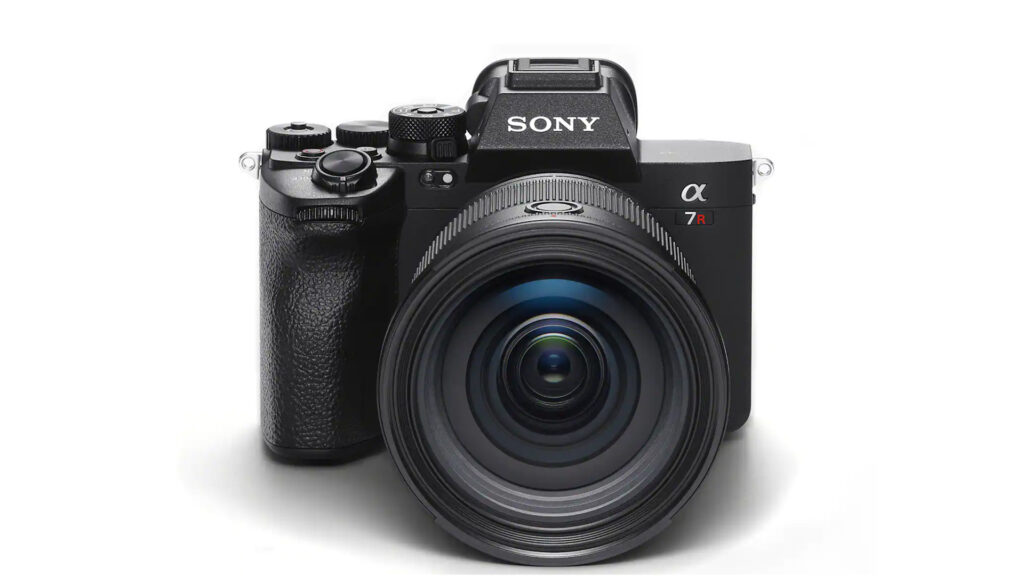
Pros
- Excellent autofocus
- Impressive ISO handling
- High-resolution EVF
Cons
- Inescapably expensive
- Demands high-quality lenses
The A7R IV was replaced as Sony’s sharpest full-frame mirrorless camera by the A7R V. It also addresses a number of the A7R IV’s shortcomings, as we discovered in our evaluation, making it a more comprehensive professional camera. Remarkably detailed stills are produced by the combination of a new 61MP sensor and the Bionz XR processor. It was also simple to take handheld test shots because to the eight image stabilization levels. Furthermore impressive to us was Real-rime Recognition AF’s efficacy. Although it’s not flawless, it can typically identify and photograph a variety of subjects clearly.
Our experience with the A7R V led us to believe that its degree of detail makes it ideal for studio and landscape photography. Do bear in mind that it works best with high-end lenses, which will significantly raise the already expensive price. Although the A7R V has a clearer EVF that makes framing a pleasure, we do believe the A7R V is the better camera overall. The A7R IV has the same resolution. Having said that, you can get a better deal elsewhere if you don’t require as many sensor pixels.
3.Canon EOS R10

Pros
- Compact and lightweight
- Modern autofocus abilities
Cons
- No in-body image stabilization
- Crop on 4K/60p footage
Although it’s not the least expensive choice for novices, we believe the Canon EOS R10 to be the greatest camera for those just getting into photography. The EOS R10 is the spiritual heir to Canon’s well-liked mid-range DSLRs. It boasts two noteworthy features: lightning-fast 15 frames per second burst shooting, which was previously unheard of at this price, and excellent subject-tracking focusing. Together, these make the EOS R10 a very flexible small camera that can be used to capture a wide range of situations, from candid portraiture to darting pets. The R10 detected and followed subjects’ eyes quite well throughout our autofocus tests, which we carried out on cats, deer, and a speedy cockapoodle. 15 fps burst speeds produced a respectable hit rate.
The EOS R10, despite its size, is a lightweight camera weighing only 429g. Its deep grip ensures that the camera is well-balanced in the hand when using various lenses. Regretfully, there are now just two native lenses available for the EOS R10, and in-body image stabilization is not present. However, if you’re willing to purchase one of the several full-frame RF lenses that are compatible with the camera, or modify older ones with an EF-EOS R converter, then it’s a flexible companion that’s perfect for beginning photographers.
4.Canon EOS R7
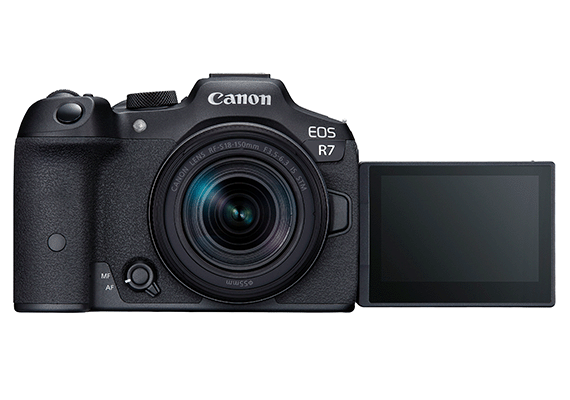
Pros
- Rapid burst speeds
- Excellent handling
- Impressive autofocus
Cons
- Limited native lenses
- Average viewfinder
- 4K limited to 60fps
We believe that the Canon EOS R7 is currently the best crop sensor camera available if full-frame is not a must. We emphasized in our evaluation the 32.5MP sensor’s superior detail delivery, outstanding in-body image stabilization, and outstanding focusing performance. In low light, its full-frame cousins still have the advantage, but in our real-world tests, the EOS R7 delivered beautiful shots in a variety of situations. Its burst speeds of 30 frames per second also pleased us, making it an excellent option for sports and wildlife aficionados.
The EOS R7 proved to be a pleasant camera to handle and operate, boasting a good grip and an ample array of direct-access buttons, according to our tests. The fact that the EOS R7 can record uncropped 4K/60p video output makes it a good all-around camera, and the dual UHS-II card slots are a nice bonus. The only significant disadvantage at the moment is the continuous absence of native lenses, which is a problem that other APS-C cameras like the Fujifilm X-T5 and Sony A6700 do not have.
5.OM System OM-1 II

Pros
- Stacked sensor boosts performance
- Impressive stabilization
- Useful computational modes
Cons
- Only 20MP resolution
- Slightly fiddly controls
Not everyone needs a full-frame camera, and the OM System has created a micro four thirds (MFT) market specifically for individuals who require a lightweight, durable, and high-performing system—particularly for outdoor photographers. The flagship MFT model, the OM System OM-1 II, is a strong substitute for photographers who value portability, size, and a fun handheld experience. The quick TruePix X processor and stacked Micro Four Thirds sensor, which were carried over from the OM-1, allowed the OM-1 to perform quite well in most of our testing, including wildlife photography. It has a wide range of subject detection modes; for instance, it’s difficult to find a better autofocus system for taking pictures of birds.
Apart from being the best available modes outside of smartphones, the computational photography modes are also quite distinctive. Features like in-camera Focus stacking, Live ND, and High Res Shot help offset the camera’s inferior sensor. A graduated filter ideal for landscape photography, Live Grad ND, was also added by OM System.
But it’s not all good news. We believe that instead of creating a new, more expensive model, the upgrades for this second-generation model should have been provided through a firmware update, making it nothing more than a cosmetic update for the now-cheaper OM-1. For a camera at this price point, the MFT sensor and 20MP resolution are adequate, but the low light image quality falls short of full-frame competitors’ standards. If you can get past those issues, the OM-1 II will be a great travel companion because to its extensive selection of Micro Four Thirds lenses. In short, it’s among the most fun cameras money can buy.
How to choose the best camera for you
When purchasing a digital camera, sensor size is the most important factor to consider. Although bigger doesn’t always mean better, it might give you an idea of the type of camera it is, how much the lenses will cost, and who it is intended for. Generally speaking, full-frame cameras are usually reserved for more experienced photographers with larger budgets, while Micro Four Thirds and APS-C cameras are suitable for both pros and enthusiasts. One-inch sensor compact cameras are ideal for everyday and travel photography.
The majority of photographers regard viewfinders, whether optical or electronic, to be crucial, and handling to be additional elements to seek for. In case you plan to utilize longer lenses, having a firm grasp is crucial. You should also think about the lenses you’ll probably need for your preferred kinds of photography; for instance, wide-angle zooms work better for landscape shots, while bright prime lenses work better for street and portrait photography. Selecting the ideal camera system, complete with lenses, is frequently preferable to picking just one camera.

FAQS:
Which kind of camera is ideal for taking pictures?
There is no one element that determines which kind of camera is ideal for photography, as you can see from our extensive buying advice above. When selecting a stills camera, there are numerous factors to take into account, such as resolution and sensor size. For this reason, it’s a good idea to take our real-world test comments into consideration.
The importance of each of these factors will come down to your preferred style of shooting. Objectively speaking, the larger a camera’s sensor, the more light it can gather – and the higher its resolution, the sharper its images will be. That’s why we rate mirrorless cameras such as the Sony A1 so highly for their stills performance: its 50.1MP full-frame sensor is the class of the field.
However, it’s not always that easy to answer the question. Except in the case of experienced photographers, the greatest resolutions are usually superfluous. Similarly, because of their larger sensors, full-frame cameras are less portable. That’s why you might like the Fujifilm X-H2, a mirrorless camera with an APS-C sensor that offers excellent resolution. Alternatively, if photography is your first passion, an entry-level APS-C camera like the Canon EOS R10 with a lesser resolution can be the ideal option.
Whether a DLSR is better for photography than a mirrorless camera is the big question. Read our guide on mirrorless vs DSLR cameras for a thorough explanation of this issue. In a nutshell, mirrorless cameras are seen by most manufacturers as the way of the future for photography, and the newest models provide unparalleled performance and quality. As you’ll see below, though, that doesn’t always mean you should pass on DSLR models.
Are DSLRs the ideal camera gear?
DSLRs are no longer at the top of the camera tech tree, despite their historical association with “serious” photography. Now, mirrorless cameras, which use an entirely electronic viewfinder (EVF) in place of the DSLR’s optical viewfinder, benefit from the newest lenses and focusing systems from the major camera manufacturers. It has been years since Canon and Nikon debuted a new DSLR. That’s why mirrorless cameras—as opposed to DSLRs—dominate our list above.
That does not imply that you should not think about purchasing a DSLR for your photography needs. Their primary advantage nowadays is value for money; as they don’t have an electronic viewfinder, they are typically less expensive than mirrorless counterparts, and because of their maturity, they offer a large selection of reasonably priced lenses. Older DSLRs are also great used purchases, such as the Canon EOS 6D. However, mirrorless cameras are now the most wise long-term investments.
How we test cameras
We place a lot of emphasis on real-world tests like perfectpicks because they are the most insightful way to understand a camera’s performance and character. Standardized tests for other factors like ISO performance are also highly valued. The best cameras for photography are not going to be inexpensive these days, so it’s important to read up on them.
Firstly, we examine the camera’s layout, functionality, and controls to determine the type of photographer it is intended for and who would most enjoy using it. We will test its startup speed and determine its capabilities by using it both handed and on a tripod during our shoot.
In terms of performance, we take pictures in both raw and JPEG (if available) and use the quickest supported memory card type (such as UHS-I, UHS-II, CFexpress, and so on). We also make sure the card is formatted. For the purpose of testing burst shooting, we have standard camera settings (1/250 sec, ISO 200, continuous AF). We then choose from a variety of burst shooting modes and record the duration, number of frames, and buffer clearing speed of sequences in front of a stopwatch. We repeat the test for both raw and JPEG files.
We also test the camera’s multiple autofocus modes (Face and Eye AF) in single point, area, and continuous modes under varied lighting circumstances. In order to gain an understanding of the metering and the sensor’s capacity to manage noise and capture fine details, we also take a variety of images in both raw and JPEG formats, specializing in portrait, landscape, low light, macro, and close-up shots.
We’ll also process a few test photographs to see how we can push areas such as shadow recovery if Adobe Camera Raw is able to process the raw files from the camera. In order to get a feel for the ISO settings we’d be willing to push the camera to, we’ll also evaluate the ISO performance throughout the entire range.
Another crucial factor is battery life. Our test begins with a fully charged battery, and we continue with our standard camera testing until the battery runs completely flat. After that, we tally the number of possible photos and compare it to the camera’s official CIPA rating; the outcomes may vary, for better or worse. Lastly, we use the companion app to record some test footage at various frame rates and resolutions to assess the camera’s video capabilities.

